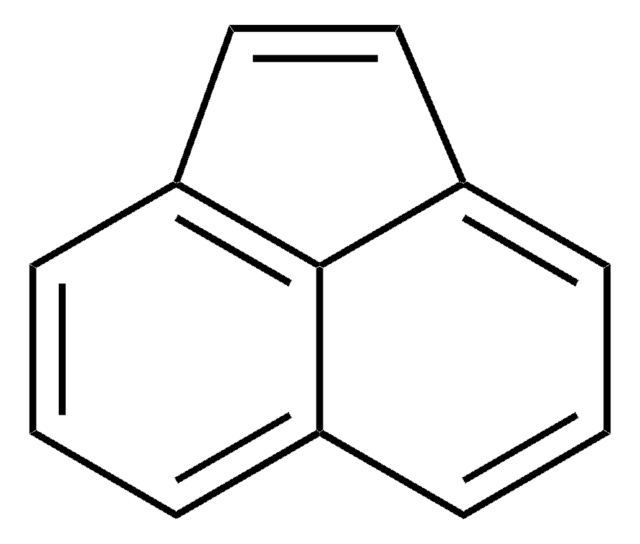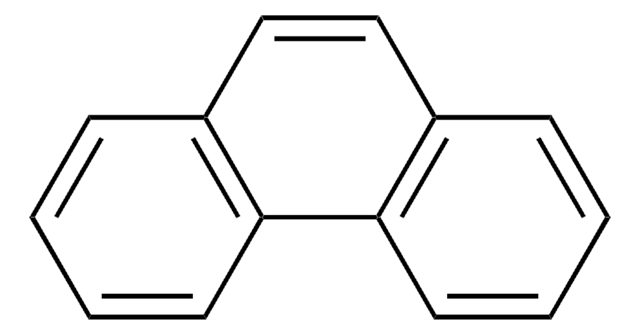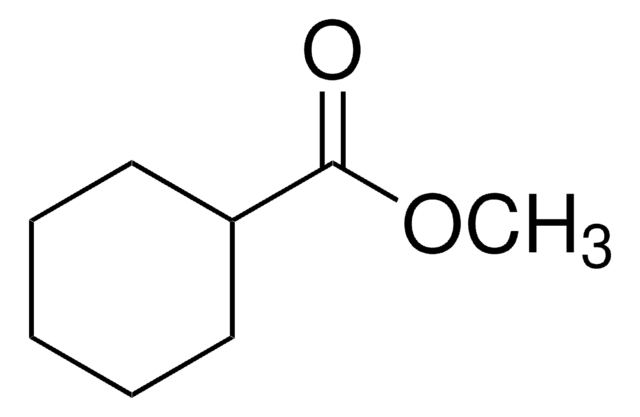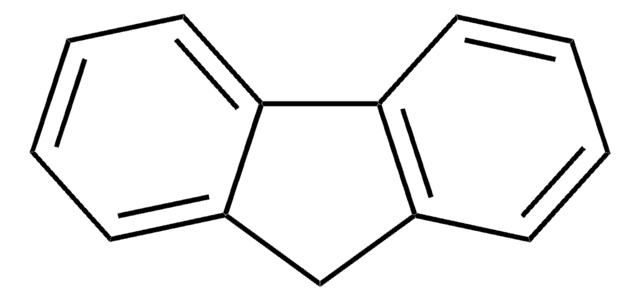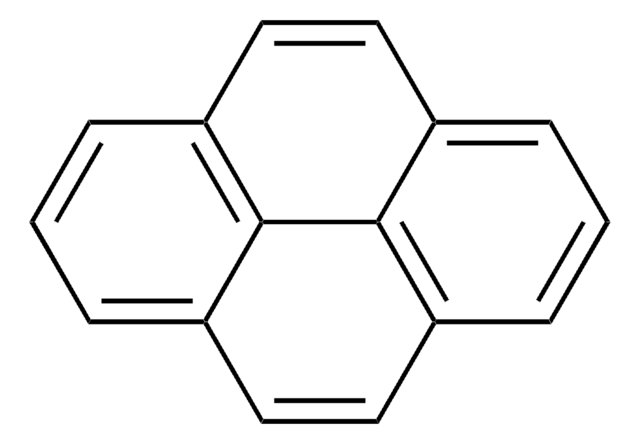215376
Acenaftene
99%
Sinonimo/i:
1,8-Etilen-naftalene
About This Item
Prodotti consigliati
Densità del vapore
5.32 (vs air)
Livello qualitativo
Tensione di vapore
10 mmHg ( 131 °C)
Saggio
99%
Forma fisica
solid
P. eboll.
279 °C (lit.)
Punto di fusione
90-94 °C (lit.)
Solubilità
chloroform: soluble 5%, clear, colorless to faintly yellow
Stringa SMILE
C1Cc2cccc3cccc1c23
InChI
1S/C12H10/c1-3-9-4-2-6-11-8-7-10(5-1)12(9)11/h1-6H,7-8H2
CWRYPZZKDGJXCA-UHFFFAOYSA-N
Cerchi prodotti simili? Visita Guida al confronto tra prodotti
Categorie correlate
Descrizione generale
Bacterial oxidation of acenaphthene by Beijerinckia sp. and Beijerinckia sp. strain B8/36 has been reported. Acenapthene forms 1:1:1 inclusion compound by complexing with inclusion compound of β-cyclodextrin and alcohol. Kinetics of the atmospherically important gas-phase reactions of acenaphthene with OH and NO3 radicals, O3 and N2O5 has been investigated at 296 ± 2K.
Applicazioni
- Optimization of Acenaphthene Production: A research article demonstrated the use of high-efficiency HILIC capillary columns for slurry packing at 2100 bar, showcasing an advanced technique that could optimize the synthesis and purification of complex polycyclic aromatic hydrocarbons like acenaphthene, essential for enhancing productivity and purity in chemical processes (Anderson et al., 2024).
- Environmental Impact Assessment: A study investigated the relationship between polycyclic aromatic hydrocarbons (PAHs) and reactive oxygen species in PM2.5 emissions, providing a critical evaluation of the environmental impacts of compounds like acenaphthene in industrial regions, thus informing pollution control and environmental safety strategies (Xu et al., 2024).
- Advances in Organic Semiconductor Materials: Research focused on the synthesis and properties of pyrene-bridged acenaphthenes, contributing to the development of novel organic semiconductor materials, which are crucial for electronic and photonic applications, thus broadening the utility of acenaphthene in high-tech industries (Polkaehn et al., 2023).
- Bioassays for Organic Pollutants: Researchers developed bioassays for organic pollutants, including acenaphthene, using chemical activity-based loading of artificial sediments. This approach offers a new method to assess ecological risks associated with organic contaminants, while also optimizing the derivation of predicted no-effect concentrations (PNECs) for polycyclic aromatic hydrocarbons, critical for regulatory compliance and environmental health. (Abel et al., 2024), (Sun et al., 2023).
Avvertenze
Warning
Indicazioni di pericolo
Consigli di prudenza
Classi di pericolo
Aquatic Acute 1 - Aquatic Chronic 1
Codice della classe di stoccaggio
11 - Combustible Solids
Classe di pericolosità dell'acqua (WGK)
WGK 3
Punto d’infiammabilità (°F)
257.0 °F - closed cup
Punto d’infiammabilità (°C)
125.0 °C - closed cup
Dispositivi di protezione individuale
dust mask type N95 (US), Eyeshields, Gloves
Scegli una delle versioni più recenti:
Possiedi già questo prodotto?
I documenti relativi ai prodotti acquistati recentemente sono disponibili nell’Archivio dei documenti.
I clienti hanno visto anche
Il team dei nostri ricercatori vanta grande esperienza in tutte le aree della ricerca quali Life Science, scienza dei materiali, sintesi chimica, cromatografia, discipline analitiche, ecc..
Contatta l'Assistenza Tecnica.
